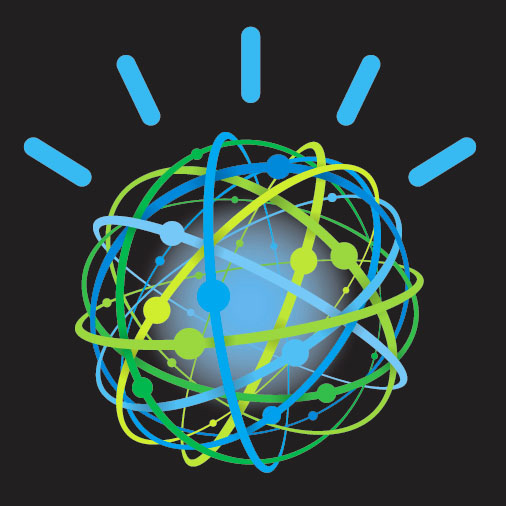February 16, 2012 - Washington, DC Overview and Agenda Photos
This Research Made Watson Possible
![]() Download Summary
Download Summary
![]() Download PDF Slides
Download PDF Slides
![]() Download Video
Download Video
Summary

In 2007 IBM began a quest to push the boundaries of open-domain question answering and create a computer technology that delivers human-level question answering performance. Four years later IBM introduced Watson, a computer system capable of understanding natural language questions over a broad domain of topics and returning precise answers with meaningful confidence. To demonstrate this technology, IBM pitted Watson against the world’s best human players in a two-game match on the popular Jeopardy! quiz show. Watson was victorious in this historic match, which aired on national television in February 2011.
Beating the best human contestants at Jeopardy! represents a major landmark in open-domain question answering. What IBM has accomplished with Watson is the development of a software architecture and a methodology that builds on, integrates, and advances decades of innovation in the fields of information retrieval, natural language processing, knowledge representation and reasoning, machine learning, and human-computer interaction.
The Federal government’s Networking and Information Technology Research and Development (NITRD) Program has played a key role in supporting many of the technologies that laid the foundation for Watson. Investments in fundamental research have produced important advances as well as highly skilled researchers and engineers who can continue to improve and apply these core technologies. Coordinated programs, such as the Text REtrieval Conference (TREC) series sponsored by NIST, have multiplied the impact of independent research groups by creating research communities focused on collaboratively solving important problems. These programs have also defined meaningful metrics and created essential data sets to drive and evaluate solutions.
The programs and research supported by the NITRD over the last two decades have had a direct impact on the Watson research team by enabling the education and training of many team members, creating community awareness and focus around key core technologies, and fueling critical research. With this background of work in related fields, IBM was able to identify open-domain question answering as a grand challenge problem and make a significant investment to drive question answering to new levels of performance.
This accomplishment, however, is just the beginning in this line of research. Artificial Intelligence techniques in language and knowledge processing have a long way to go before computers can reason over natural language content and interact at human levels. Watson’s public performance has opened the door to commercial applications and a future where scientists and businesspeople alike have a deeper appreciation for the potential impact of technologies that promise to tap into the wealth of knowledge buried in text and other unstructured data sources. The full potential of this technology will be realized only with continued investment and focus.
Eric Brown
 Eric Brown earned his B.S. at the University of Vermont (1989) and M.S. and Ph.D. at the University of Massachusetts (1992, 1996), all in Computer Science. Dr. Brown joined the IBM T.J. Watson Research Center in 1995 as a research staff member, and has been a manager since 2004. While at IBM Eric has conducted research in information retrieval, document categorization, text analysis, question answering, bioinformatics, and applications of automatic speech recognition. Since 2007 Dr. Brown has been a technical lead on the DeepQA project at IBM and the application of automatic, open domain question answering to build the Watson Question Answering system. The goal of Watson is to achieve human-level question answering performance. This goal was realized in February of 2011 when Watson beat Ken Jennings and Brad Rutter in a televised Jeopardy! exhibition match. Dr. Brown’s role on the project has spanned architecture development, special question processing, and hardware planning, and he is currently focused on applying Watson to clinical decision support in Healthcare. Dr. Brown has published numerous conference and journal papers, and holds several patents in the areas of text analysis and question answering. Dr. Brown currently resides in New Fairfield, CT with his wife and three children..
Eric Brown earned his B.S. at the University of Vermont (1989) and M.S. and Ph.D. at the University of Massachusetts (1992, 1996), all in Computer Science. Dr. Brown joined the IBM T.J. Watson Research Center in 1995 as a research staff member, and has been a manager since 2004. While at IBM Eric has conducted research in information retrieval, document categorization, text analysis, question answering, bioinformatics, and applications of automatic speech recognition. Since 2007 Dr. Brown has been a technical lead on the DeepQA project at IBM and the application of automatic, open domain question answering to build the Watson Question Answering system. The goal of Watson is to achieve human-level question answering performance. This goal was realized in February of 2011 when Watson beat Ken Jennings and Brad Rutter in a televised Jeopardy! exhibition match. Dr. Brown’s role on the project has spanned architecture development, special question processing, and hardware planning, and he is currently focused on applying Watson to clinical decision support in Healthcare. Dr. Brown has published numerous conference and journal papers, and holds several patents in the areas of text analysis and question answering. Dr. Brown currently resides in New Fairfield, CT with his wife and three children..
The materials on this webpage, including speakers' slides and videos, are copyright the author(s).
Permission is granted for non-commercial use with credit to the author(s) and the Computing Community Consortium (CCC).


